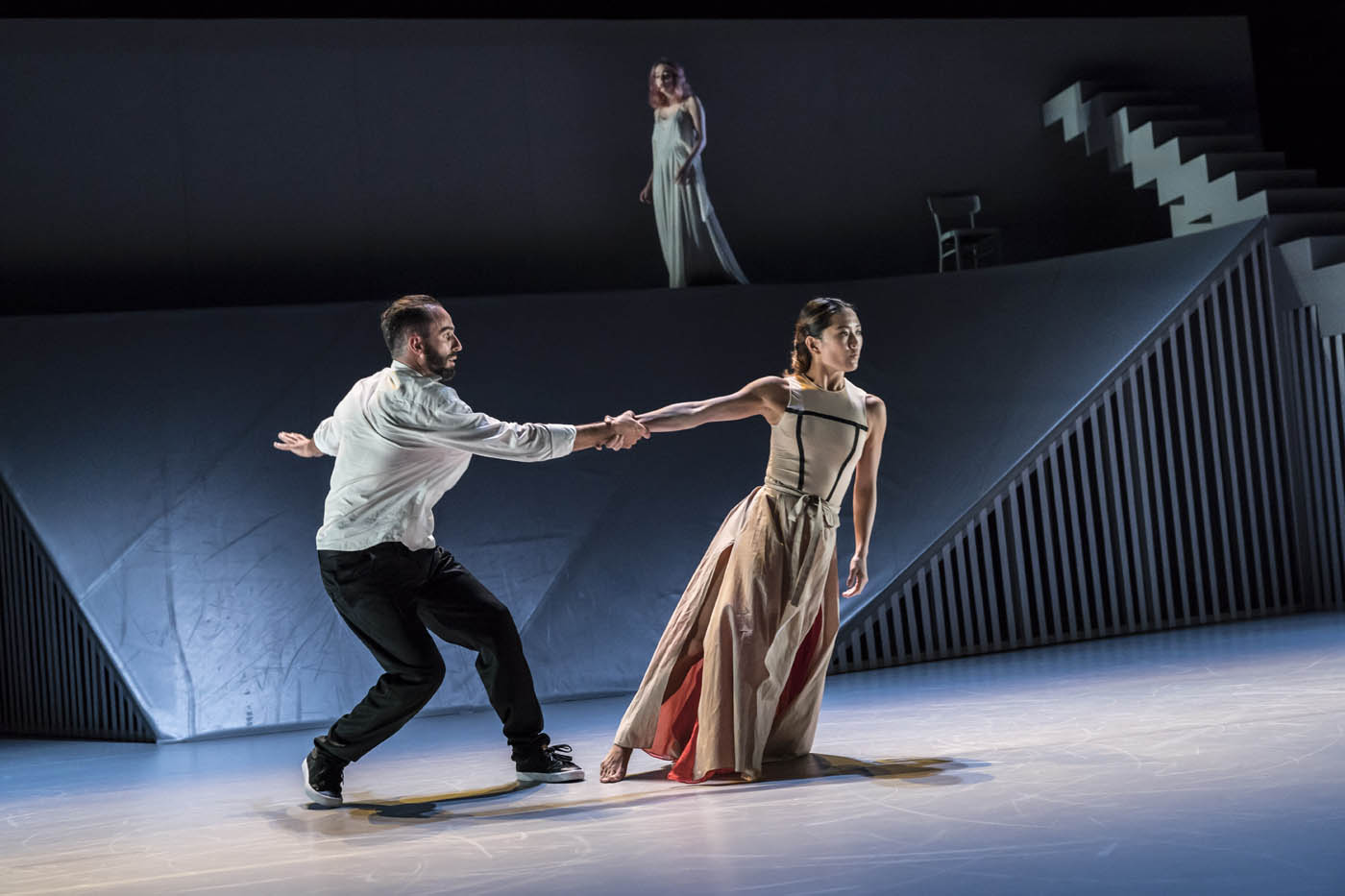“Dystopian Dream” was performed at Memorial Auditorium on Friday and Saturday night, featuring dance Wang Ramirez (Honji Wang and Sébastien Ramirez) and Eva Stone as well as composed by new Stanford Live resident artist Nitin Sawhney. “Dystopian Dream” holds a strong narrative, one that involved some sort of temptation (white vs. black and light vs. dark) or a push-and-pull between two sides. However, the piece falls prey to performing to a generalized audience and borders on a sort of commercial work that doesn’t dive as deep as it could.
“Dystopian Dream” is meant to be about a 75-minute piece, but a result of this is the light vs. dark theme being drilled in far too long. “Dystopian Dream” caters to either a very specific audience or very broad audience, however you may see it — one that enjoys art and dance for the sake of being constantly bombarded by sensory input and movement (the distinction can be made in a similar comparison between contemporary commercial films versus more “classical” films that rely on long shots and heavy pauses). This isn’t innately bad, per se, but it carries the potential detriment of distilling the art form and piece to a few simply points and illustrates the idea that dance that maybe isn’t as in-your-face or is more experimental in nature is less-than or not as engaging.
Much of the piece’s normative nature also stemmed from the score, which functioned much more as a soundtrack than a score. It included one song whose lyrics were “Dystopian Dream” over and over again — it felt like the moment in a book when you read the title and have to put the book away for a little bit before coming back to it. The piece was rather rigidly segmented and the score didn’t flow from one part to the next — instead, it relied on very abrupt silences as the dancers kept moving, giving the audience a jarring moment of nothingness before diving into the next pop-inspired musical piece. I began to feel disengaged once a faux-EDM score followed a particularly haunting string instrumental part along with a country- or bluegrass-inspired segment that felt alarmingly out of place within the piece, which was tied together extremely well in the visual and performative elements.
Although the artists involved in “Dystopian Dream” seem to have a very clear vision and their synchronous physical and artistic ability cannot be discounted, the piece is mostly carried by the spectacle. Ramirez dangles from a wire in the ceiling that allows him to walk sideways on a vertical wall, seemingly “illuminating” pieces of “tile” in the wall as he leaps from spot to spot. This is carried over to performers exiting one side of the stage and reappearing from behind the large monochromatic set as well as strapping another dancer to a wire and lifting them up and down.
In its performative elements, “Dystopian Dream” has the potential to rise beyond a normative piece that doesn’t seem to achieve any particular point beyond the narrative of a “dream state” filled with light and dark forces. It’s simply a matter of making sure all the parts cohere in a way that continues to make the piece engaging without relying on swift changes and metaphorically-moving parts that feel jumpy and disconnected.
Contact Olivia Popp at oliviapopp ‘at’ stanford.edu.
Note: A previous version of this article incorrectly stated that Sawhney was in the performance. The piece was performed by Honji Wang, Sébastien Ramirez and Eva Stone.
